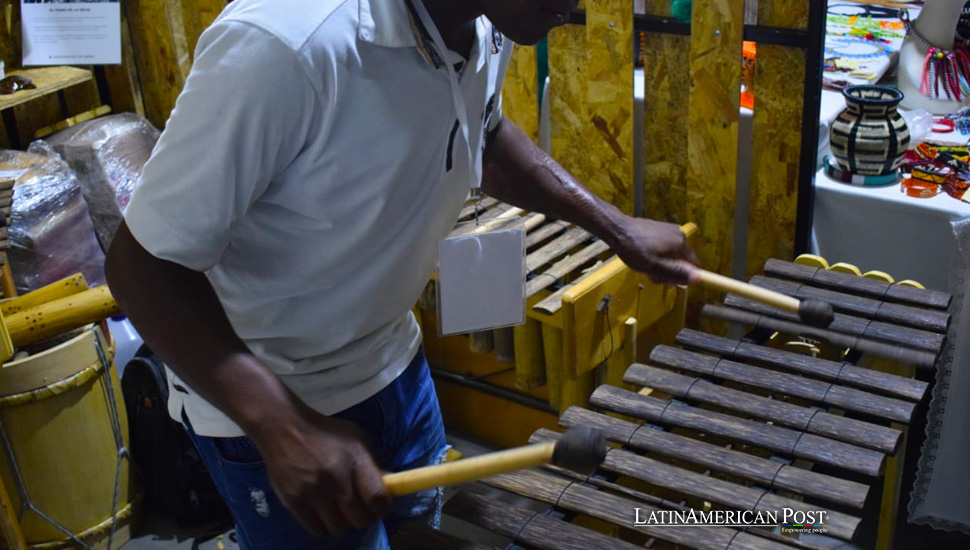The Marimba’s Echo: Cultivating Social Change in Colombia’s Pacific

In Colombia’s Pacific, Juan Tenorio crafts marimbas, believing in culture’s power to foster social change amidst state neglect.
In the secluded and often overlooked corners of Colombia’s Pacific coast, the profound resonance of the marimba de chonta continues to echo, a testament to the region’s rich cultural heritage and its relentless pursuit of social change through cultural preservation. At the heart of this movement stands Juan Tenorio, a luthier whose life’s work embodies the belief that the path to societal transformation lies within cultural expression.
Crafting Harmony: The Spiritual Artistry of Marimba Making
The marimba is far from an ordinary instrument. Its significance extends beyond its musical charm; it bridges the Pacific to Africa and encapsulates the indigenous knowledge of the woods from which it is crafted. Tenorio, speaking from his workshop in Tumaco, Nariño, shares insights into the spirituality and intricate craftsmanship involved in creating a marimba. The process is deeply intertwined with nature, requiring assembly during low tide to enhance its sound and considering lunar phases to ensure the wood’s optimal condition.
According to Tenorio, this percussion instrument carries its region’s voices. Traditionally, each marimba is crafted and tuned for a specific singer, a ‘cantora,’ with the tuning process beginning from the center and extending outward under the guidance of the ‘cantora’s’ pitch. This tradition underscores the marimba’s role as a spiritual and communal expression vessel, distinguishing it from its Western counterparts.
The marimba’s soulful essence is attributed to the careful selection and treatment of its material—specifically, the chonta wood, which must be dried in the forest rather than in urban settings to preserve its tonal quality. Tenorio’s dedication to this craft is evident in his meticulous selection process, where only a fraction of the harvested wood meets his stringent standards for creating an instrument that plays music and tells the story of its people.
Cultural Treasure: Preserving Afro-Colombian Heritage
Recognizing the marimba’s pivotal role in the Afro-Colombian culture of the Pacific, Tenorio embarked on a mission to share this cultural treasure with future generations. He established a school aimed at teaching the arts and spirituality of the Pacific South, integrating daily life with cultural education. For Tenorio, cultural revolution transcends armed conflict; it’s about leading his community toward a better, more enlightened future.
Tenorio’s journey began in his youth when he led a revolt against plastic toys in Tumaco, advocating for cultural authenticity and communal unity through traditional dances and crafts. This childhood rebellion evolved into a lifelong commitment to artistic education and empowerment, with Tenorio and his wife dedicating their lives to teaching music, dance, and crafting traditional garments.
The Afrocolombian Foundation Casa Tumaco, founded by Tenorio, serves as a beacon of hope and cultural pride, offering lessons in marimba playing, singing, dancing, and instrument crafting. Tenorio aims to instigate social change through these activities by embedding cultural values in the fabric of his community’s identity.
Bridging Struggles: Challenges and Persistence
Despite Tenorio’s efforts, challenges persist. Tumaco, like many parts of Colombia’s Pacific region, needs more access to clean water, education, healthcare, and reliable electricity. The struggle for basic amenities is intertwined with a broader fight for cultural recognition and rights.
Also read: Amazonía: A Hub of BioCreativity Exhibition Aims to Inspire Conservation Action in the U.S.
Yet, through the rhythmic beats of the marimba and the spirited voices of its people, Tenorio’s vision for a culturally rich and socially conscious community continues to inspire. The marimba de chonta, in Tenorio’s hands, becomes more than an instrument; it is a symbol of resilience, a call to action, and a reminder of the transformative power of culture in shaping a better future for Colombia’s Pacific coast. Amidst the challenges, the grand dame of the Pacific, as Tenorio lovingly refers to the marimba, continues to sound, heralding a hopeful dawn for the region’s marginalized communities.




